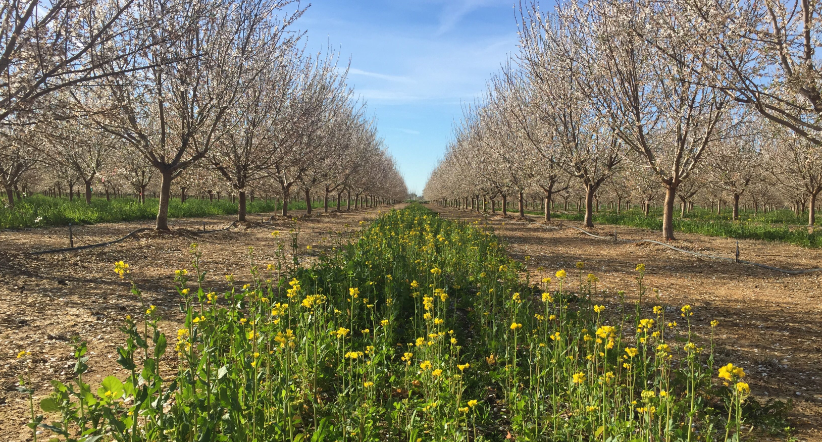California is an agricultural powerhouse, producing billions of pounds of nuts in 2020 and tree nut acreage continuing to increase year after year.
The bountiful Central Valley provides fruit and nuts to the majority of the U.S., but these orchards offer additional potential that growers have yet to reap.
A new report, Managing Vegetation for Agronomic and Ecological Benefits in California Nut Orchards [PDF], details opportunities for growers to build a more resilient agricultural system in California — with both sustainability and profitability in mind.
The beauty of managed vegetation
The report details the multiple benefits that managed vegetation can bring to under-utilized areas on farms.
For example, planting diverse cover crops on orchard floors is a smart investment in on-farm ecosystem services, helping improve pest control, pollination, weed management and soil health.
There are also broad-scale benefits of managed vegetation such as improved biodiversity, soil health and water quality, not to mention improved aesthetics if growers continue to increase diversity and manage cover crops for a longer duration of the growing season.
Overcoming obstacles with financial and technical support
While the practice of implementing managed vegetation comes with some barriers to entry, such as potential high upfront costs, growers are finding that these risks are lower than anticipated and are overall easily managed. Especially with government incentives like cost-share programs, the financial risks from managed vegetation are minimized.
Growers are more likely to experience the benefits from managed vegetation when they receive technical guidance from pest control advisors and other certified consultants.
By analyzing weather patterns, soil types and other farm variables, and by cross referencing on-farm goals, growers and their advisors can build a tailored plan to harness the power of managed vegetation to bring maximum benefits to their operations.
For example, utilizing certain wildflowers, legumes and brassicas can bring more pollinator benefits to farms, while grasses can have the largest impact on soil health. How California orchard growers can harness the power of nature to build a more resilient agricultural system. Share on X
The benefits of collective action
Although each operation has potential to reap the value of managed vegetation, the benefits are enhanced exponentially if multiple orchards and farms partake in collective action.
For example, valuable pollinators will have more opportunities to thrive if a majority of orchards in a county invest in pollinator-friendly cover crops.
When it comes to building resilience, the whole is greater than the sum of its parts, and entire regions can experience agricultural and environmental resilience if more farms and orchards together grow the value of conservation practices.










